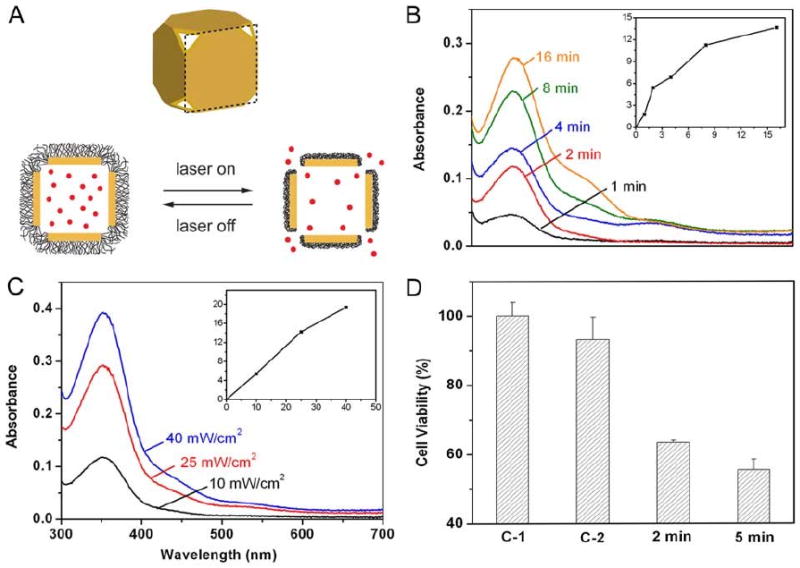Figure 18.

(A) Schematic showing the mechanism for drug release from Au nanocages coated with a smart polymer. When the polymer is heated above its LCST it collapses, exposing the pores and releasing the contents. (B-D) Controlled release from the Au nanocages covered by a smart polymer with an LCST at 39 °C (pNIPAAm-co-pAAm). (B) Absorption spectra of alizarin-PEG released from the copolymer-covered Au nanocages by exposure to a pulsed NIR laser at a power density of 10 mW cm−2 for 1, 2, 4, 8 and 16 min; and (C) by exposure to the near-infrared laser for 2 min at 10, 25 and 40 mW cm−2. The insets show the concentrations of alizarin-PEG released from the nanocages under different conditions. (D) Release of a chemotherapeutic drug (doxorubicin) from Au nanocages to breast cancer cells in vitro, showing significant cell death: (C-1) cells irradiated with a pulsed near-infrared laser (20 mW cm−2) for 2 min in the absence of Au nanocages; (C-2) cells irradiated with the laser for 2 min in the presence of Dox-free Au nanocages; and (2/5 min) cells irradiated with the laser for 2 and 5 min in the presence of Dox-loaded Au nanocages. Reproduced with permission from [127], Copyright 2009 Nature Publishing Group.
